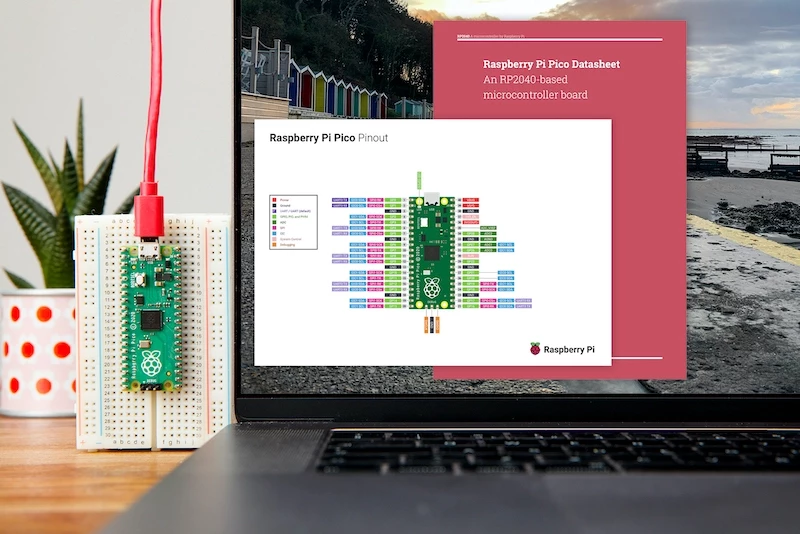






Raspberry Pi Pico
Introduction
Raspberry Pi Pico is a tiny, fast, and versatile board built using RP2040, a brand new microcontroller chip designed by Raspberry Pi in the UK. It is a low-cost, high-performance microcontroller board with flexible digital interfaces.

RP2040
Designed by Raspberry Pi, RP2040 features a dual-core Arm Cortex-M0+ processor with 264KB internal RAM and support for up to 16MB of off-chip Flash. A wide range of flexible I/O options includes I2C, SPI, and — uniquely — Programmable I/O (PIO). These support endless possible applications for this small and affordable package.

For beginners, for experts
From controlling appliances to operating a light display, Raspberry Pi Pico puts the technology that underpins countless everyday operations into your hands.
Programmable in C and MicroPython, Pico is adaptable to a vast range of applications and skill levels, and getting started is as easy as dragging and dropping a file.
More experienced users can take advantage of Raspberry Pi Pico’s rich peripheral set, including SPI, I2C, and eight Programmable I/O (PIO) state machines for custom peripheral support.

Specification
- 21 mm × 51 mm form factor
- RP2040 microcontroller chip designed by Raspberry Pi in the UK
- Dual-core Arm Cortex-M0+ processor, flexible clock running up to 133 MHz
- 264KB on-chip SRAM
- 2MB on-board QSPI Flash
- 26 multifunction GPIO pins, including 3 analogue inputs
- 2 × UART, 2 × SPI controllers, 2 × I2C controllers, 16 × PWM channels
- 1 × USB 1.1 controller and PHY, with host and device support
- 8 × Programmable I/O (PIO) state machines for custom peripheral support
- Supported input power 1.8–5.5V DC
- Operating temperature -20°C to +85°C
- Castellated module allows soldering direct to carrier boards
- Drag-and-drop programming using mass storage over USB
- Low-power sleep and dormant modes
- Accurate on-chip clock
- Temperature sensor
- Accelerated integer and floating-point libraries on-chip
Documents
- Raspberry Pi Pico product brief
- Raspberry Pi Pico datasheet
- Getting started with Raspberry Pi Pico: C/C++ development
- Raspberry Pi Pico C/C++ SDK
- API-level Doxygen documentation for the Raspberry Pi Pico C/C++ SDK
- Raspberry Pi Pico Python SDK
- Raspberry Pi RP2040 datasheet
- Hardware desigh with RP2040
- Raspberry Pi Pico design files
Shipping List
Resource
Review
Jul 24, 2025
The pico is a perfect microcontroller addition to the R-Pi family!











